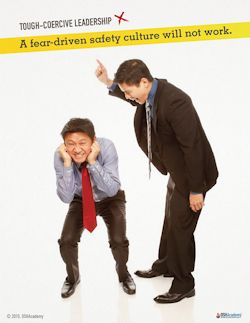Leadership and Culture
Every day, employees, supervisors, and managers have many opportunities to communicate and act in ways that demonstrate safety leadership.
Kevin Burns - Who Safety Managers Serve
Most employees are well-intentioned and aim to do their best with the resources they have. However, they don’t always have the physical resources and psychosocial support needed to achieve the best results. The company's safety culture is crucial in providing the necessary resources and support to employees.
"For employees, culture is simply how things work around here. For management, on the other hand, culture is something to manage to ensure alignment with the company's mission, values, and goals.
The way leaders act can greatly impact how employees view their company's safety culture. Generally, managers exhibit one of three leadership styles in the workplace: tough-coercive, tough-controlling, or tough-caring.
Tough-Coercive Leadership
Managers with a tough-coercive leadership style are tough on safety to protect themselves from litigation and OSHA citations. Their main motivation is to meet legal requirements, nothing more.
A tough-coercive leadership approach has the following characteristics:
- Managers primarily use the threat of punishment to control performance.
- The work culture is driven by fear, and the accountability system focuses on negative consequences.
- Managers' actions and words often result in poor trust and negative relationships with employees.
- Employees perform only to avoid negative consequences. They will comply, but excellent performance is rare.
- High employee turnover occurs because of low job satisfaction and heightened stress.
What supervisors and managers might say if they have a coercive management style:
- "If I go down, I'm taking you all with me!"
- "If you report hazards, you will be labeled a complainer."
- "If you violate any safety rule, we'll fire you on the spot!"
As you might guess, fear-driven cultures cannot achieve world-class safety because employees work only to avoid negative consequences. The bottom line is, a culture based on fear won't be effective at any organizational level. It may get compliance, but that's about it.
Knowledge Check Choose the best answer for the question.
1-4. A manager routinely threatens employees with discipline for minor mistakes. Workers comply with rules but rarely show initiative. Which leadership style is being demonstrated?
You forgot to answer the question!

